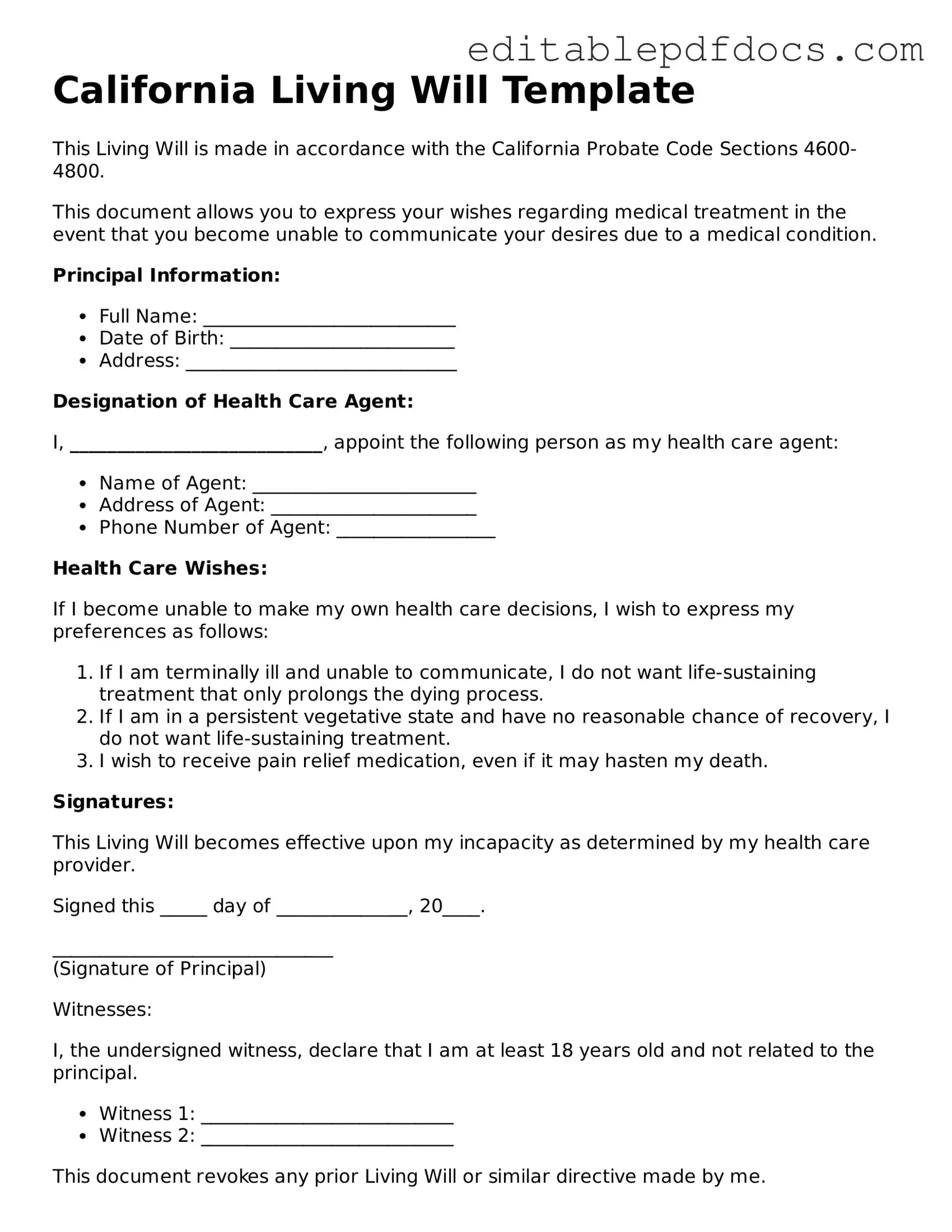In California, a Living Will is an essential document that allows individuals to express their preferences regarding medical treatment in situations where they may be unable to communicate their wishes. This legally binding form addresses critical decisions about life-sustaining measures, such as resuscitation efforts, mechanical ventilation, and artificial nutrition. By outlining specific desires for end-of-life care, a Living Will provides clarity for family members and healthcare providers, ensuring that a person's wishes are honored during difficult times. Understanding the nuances of this form is crucial, as it not only facilitates personal autonomy but also alleviates the emotional burden on loved ones faced with making tough choices. Additionally, the Living Will can work in conjunction with other advance healthcare directives, creating a comprehensive plan that reflects an individual’s values and preferences. As life can be unpredictable, taking the time to complete this form can be a vital step in safeguarding one’s healthcare choices and ensuring peace of mind for both the individual and their family.
